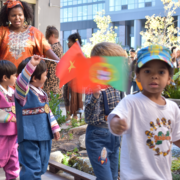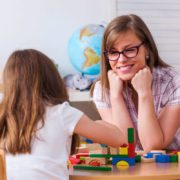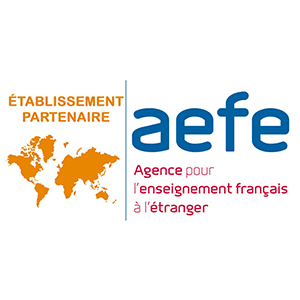Does Bilingualism Lead to Language and Speech Delays?
Chances are, if your child is actively learning a second language at a young age, it’s with high hopes that they will someday become proficient bilinguals. Let’s face it, parents don’t generally enroll children in dual language studies without the desire for them to one day become fluent in multiple languages. Along the path, however, are some key questions and even concerns that should be addressed in order to give a child the best chance at achieving true bilingualism.
Will Bilingualism Cause Speech Delays?
One of the biggest questions parents of young children face when considering a second language for their child early on is – will bilingualism cause speech delays? The concern is a valid one to address since no parent wants to inhibit the learning path of their child by any means.
While many children often display what appears to be speech delays when exposed to dual languages, it’s important to note these pauses are not delays in learning. On the contrary, when a child takes pause to consider which language to use at which time, they are actually beginning to show a mastery of both languages. The “pause” or “delay” is a sign their minds are processing the information and learning not only the language cues, but also, to problem solve and compartmentalize simultaneously.
Does Multiple Language Learning Cause Confusion?
Often times children who are learning a second language may pull words from both languages in regular conversation. This “mix up” may be seen as confusion to some, but it’s actually a sign of high cognitive functionality and impressive progress. Since children are operating on a smaller vocabulary than adults, they often need to rely on tried-and-true words to describe things they don’t yet understand. By pulling other words, they are showing they understand a cross-correlation which will help them to eventually pull together a more complete picture.
“One misunderstood behavior, which is often taken as evidence for confusion, is when bilingual children mix words from two languages in the same sentence. This is known as code mixing. In fact, code mixing is a normal part of bilingual development, and bilingual children actually have good reasons to code mix,” explains the U.S. National Library of Medicine’s National Institutes of Health.
Should You Wait to Introduce a Second Language?
Many parents consider postponing bilingual studies until their child is older and believed to be more equipped to study a second language. The belief with this is that they want their child to master one language first before introducing them to another. While this may sound plausible in theory, in order to have the best chance at fluid bilingualism, most researchers agree it’s actually best to introduce multiple languages as early as possible.
Since our brains are poised best for learning at an early age, it makes sense to introduce more learning possibilities early on. As we age, our minds evolve and begin to adapt to several environmental factors as well as physical determinants that change our ability to learn new topics. In other words, the older we get, the more our minds work against us in our ability to pick up new concepts as easily as we did when we were younger.
So, what does all of this mean? Essentially, if you’re concerned about inhibiting your child’s ability to learn by introducing a second language early on, don’t be. Research shows that the earlier and the more frequently children are exposed to dual languages, the higher their chance becomes of being fluent in both later in life.
The Environmental Advantages of Language Learning in Young Children
As any adult who has ever attempted to learn a new language or skill can tell you, picking things up later in life seems to be much more difficult than it was as a young child. No matter how hard you study or how many times you try to master a new skill, the older we get, the harder it becomes to pick things up. So, do children really learn faster than adults or is there a trick to their ability to grasp language concepts and skills at a more effective and efficient rate?
Language Learning Differences with Age
You may assume that a younger brain is more conditioned to learn, much the same as a younger body is more physically able to compete in triathlons than an older body. While you wouldn’t exactly be wrong, the process of conditioning a brain for learning is much more complex than simply age. It’s true that we do lose brain power as we age – particularly reducing our ability to pick up new items and retain new information – a fact which has a direct result on the rate in which we learn (obviously). It’s not as simple as saying adults learn slower than children because of age, however. Understanding how our minds change as we age is key to grasping why we learn differently at various stages of our lives.
“As a person gets older, changes occur in all parts of the body, including the brain. Certain parts of the brain shrink, especially those important to learning and other complex mental activities. In certain brain regions, communication between neurons (nerve cells) can be reduced… These changes in the brain can affect mental function, even in healthy older people,” explains the U.S. Department of Health and Human Services.
While our brains undergo degeneration and deterioration naturally over the years, this still does not account for a complete picture on learning differences over the ages. In other words, yes, aging minds are physically less capable of learning as younger minds, but not to the extent that thoroughly explains why children are able to pick up learning new languages and subjects so much faster.
Unconscious Learning Vs Conscious Learning
Outside of the physical difference of young minds versus older minds, there is another piece of the puzzle that helps to explain how children learn so much faster than adults: unconscious learning versus conscious learning. In the simplest definition, unconscious learning is that which takes place without even trying. Think of it as picking up a favorite line or phrase from a movie you’ve seen a few times – you didn’t intend to learn it, you just picked it up and remembered it while watching in enjoyment. Conscious learning then, is the opposite. It’s the intentional act of trying to learn a new task or subject. This form of learning is like trying to study for a test or memorize new policies or manuals for work.
So, how does this translate to language learning as children versus as adults? It’s really quite simple; young children tend to learn unconsciously while adolescents and adults lean more on conscious learning habits. Young children do not focus on studying specific grammar books, diagrams, or memorization – in fact, they don’t focus on learning at all. Instead, young children inadvertently pick up information like a sponge by simply absorbing what they see around them. Adults, on the other hand, spend hours poring over learning techniques and specifics, trying to memorize new information and, subsequently, absorb less information in the process.
Environmental Advantages of Language Learning
“(Children) are literally built to absorb information; they do this in an unconscious state of mind, like they’re learning, and they don’t even know it. Adults and older children, on the other hand, have to consciously learn the information which makes it harder because when we learn that way, information sometimes gets lost or disassociated,” explains the Instructor Blog for Penn State’s SC200 Course.
In addition to picking up learning cues unconsciously, the environments in which children learn are more conducive to information absorption as well. As children, we are encouraged and praised for the very concept of learning despite not picking up proper grammar cues or techniques. Children are met with smiles, accolades and support when they are able to communicate the basics of a new concept or language because they are not expected to learn all of the details all at once. This allows them to grow by picking up specifics a little at a time without fear of failure or sounding unintelligent if they don’t get something 100% correct.
On the flip side, older children and adults are often faced with (sometimes paralyzing) fear over sounding like anything less than a native speaker on their topic of study. In other words, adults have a fear of failing or making mistakes and being criticized for said mistakes which can (and does) inhibit the ability to fully absorb and learn through their environments.
Immersion and Bilingualism
Closely linked to the environmental advantages to learning – particularly with language learning – is the difference of learning through immersion. Immersion is the act of learning by being fully immersed in the topic of study for at least 50 percent of the time. In terms of bilingualism, it means learning by being in an environment which speaks the language being learned for at least half of your time awake each day. This is something which has benefits for both adults and young children, but again, there are differences in the rate at which each pick up the immersion learning cues.
While immersion is a highly productive method of learning, adults and children still pick things up at different rates. Referring back to the previous differences, despite being immersed in language learning, adults are still prone to cognitive degeneration inhibiting their ability to learn as well as holding on to the same fear of mistakes. It all boils down to a combination of both physical deterrents as well as environmental inhibitors that present as learning obstacles with age. It is the overall healthier cognitive functionality in combination with more favorable environmental stimulants (among other, more unique, criteria) that ultimately gives children the advantage when it comes to learning new languages and other topics more quickly than their older selves are capable of pulling off years later.
How to Continue Your Child’s Bilingual Learning at Home
When it comes to language learning, many parents often wonder how they can help their children become more proficient in their comprehension. In many cases, students will often struggle to pick up new language cues and improve fluidity of bilingualism if their studies don’t extend beyond the classroom. In fact, in order to obtain true bilingual capabilities, children require an immense amount of exposure to the languages – exposure that extends well beyond the classroom. So how can you help your child continue bilingual learning at home?
Bilingual Learning at Home
It’s well-known that pediatricians and early education professionals have long supported the relationship between reading and communication with language skills in young children. Parents are encouraged to both read to their children and interact with them directly as much as possible in order to expand their child’s language understanding. The same is true for learning a second language.
The key to expanding a child’s understanding of bilingualism is exposure – lots of exposure – to both the native and second language. Since language learning does not stop once your child leaves their classroom, parents should be continuing the learning at home by incorporating the second language as frequently as possible in the home life. This can be done by reading books, playing games, following recipes native to that language, or even just simply in regular conversations with their children.
Hands-on Learning, Not Screen-Time Learning
It’s important to understand there is a major distinction between direct bilingual exposure at home and that picked up by screen time. While certain online activities can help boost a child’s basic understanding of language, true fluidity is only possible by frequent submersion in the language itself. In other words, talk with your children in meaningful, bilingual conversations, or read to them directly to give them the most proficient means of immersion.
“In order to foster language development, the exposure has to be person-to-person; screen-time doesn’t count for learning language in young children – even one language – though kids can learn content and vocabulary from educational screen-time later on,” explains the NY Times in report of pediatrician recommendations on bilingual language learning at home.
Plenty of Language Exposure and Patience
With language learning, the best thing parents can do for their child’s learning process is to continue the language education at home by increasing their child’s exposure to the linguistics. There are virtually unlimited ways in which parents can do this, as mentioned above, but also, home submersion isn’t the only aspect to keep in mind when helping children grasp bilingualism.
No matter the age, bilingual individuals will always have a tendency to combine, or mix-up, their languages from time to time and children are no exception. Parents need to keep in mind that their child will need plenty of patience during the bilingual learning process, as well as the ability to not get discouraged when languages get mixed. This is normal and all a part of the learning process. In fact, experts say that language “mix-ups” are actually a sign of a deeper understanding of bilingualism and considered a sign that individuals are truly grasping the second language when this happens.
Above all, parents who want to help their child expand their bilingual learning at home need to take an active role in helping them do so. Frequent and fluent language interactions in both languages will help continue the submersion outside of the classroom while patience and encouragement during the learning process will help them gain the confidence they need to continue their learning even further.
Bilingual Learning Experiences for the Holidays
Holidays may bring extended breaks from school, but that doesn’t mean they aren’t a fantastic time to offer your children some unique learning experiences. In fact, the holidays are rich with opportunities for kids to broaden their knowledge on cultural and communicative topics, if parents provide them with the tools to learn. Let’s take a look at some of the fun and innovative ways children can expand their bilingual learning experiences at home during their holiday breaks from school.
Holiday Bilingual Learning Experiences
The fact is, children master the art of becoming bilingual much easier through immersion learning – or being all-encompassed in dual languages both in school and out. It goes without saying then that parents who make a point to incorporate language learning at home give their children a more thorough understanding of second languages and the greatest chance at being truly fluent in both as they grow.
So how do you go about incorporating a second language in learning experiences at home – especially over the holidays or extended times away from school? One of the easiest ways is by adding various cultural experiences to your family holiday repertoire in order to let your child see first-hand how other cultures celebrate the season.
Ways to Incorporate Cultural Learning Over the Holidays
There are virtually unlimited ways in which parents can add cultural learning experiences for their children over the holidays, so it’s really up to you which angle you choose to take. You don’t need to plan a trip to a foreign country in order to give your child a bit of immersion learning over break. There are things as simple as baking cookies from various cultures to acting out traditional activities practiced around the world – all of which will give your child an invaluable cultural experience and a better understanding of how others celebrate during this time.
If your child is enrolled in foreign language learning in school, that is a great place to start when considering cultural holiday learning activities. To expand on their learning, take a look at the traditions and practices of the language they are studying in school and plan some activities at home that will expand their understanding while they’re home on break.
Depending upon the culture, you could add a holiday baking day that allows your children to experience the various sweets enjoyed by their language of study. You could also prepare a holiday dinner together using the traditional foods and preparation of that culture. If food isn’t your thing, try looking into other traditions of the culture such as candle lighting ceremonies, parades, or even things like hiding brooms or placing shoes by a window – each culture has their own celebratory methods that are sure to enhance your child’s learning experience.
Keep the Learning Growing at Home
There are so many festivities and traditions celebrated by different cultures each year during the holiday season. Being on winter break from school doesn’t have to mean a break from learning – bring some culture and immersion learning into your child’s routine by trying new experiences and adventures related to their language learning. Do a little search to find out area festivals or activities you may have nearby or get ideas on how you can add fun learning tricks at home!
Visible Learning – How Can Parents Help at Home?
A core belief at Tessa International School is that all of our teachers should continually improve our teaching practices. Over the summer I read a book that is receiving a lot of praise from renowned educators: 10 Mindframes for Visible Learning: Teaching for Success by John Hattie and Klaus Zierer.
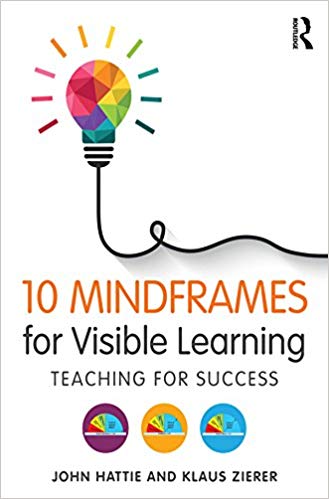
Unlike many books devoted to pedagogy, Hattie and Zierer used scientific-based evidence (for example, several meta studies) to determine ten key ‘mindframes’ for excellent teachers.
One simple take-away for teachers: instead of going into a classroom and asking oneself, ‘How can I be a great teacher?’ or ‘How can my students learn the best?’ 10 Mindframes suggests that teachers should say to themselves: ‘My job here is to evaluate my impact on my students.’
I invite you now to reflect when you were a child: which teachers made the greatest impact on you? Why? Which moments with your parents impacted you the most? Why? How can you make similar impactful moments on your own child?
As a parent of a 4 year-old and a 2 year-old and a teacher myself, I often ask myself how we as parents (whether we have education backgrounds or not) can help our children become better learners and world citizens. So I have written a few suggestions for parents who wish to make learning more impactful for students, based on many of the mindframes.
1. I am an evaluator of my impact on my child’s learning
As a parent you have a tremendous impact on your children. Do you occasionally reflect upon the memories that you are making during ‘teachable moments?’ As an example, my family and I just moved all of our belongings from house to another. Needless to say–it was an intense two days and there was a fair share of unexpected moments. My children were a part of the moving process and they saw moments that were a bit, shall we say….frustrating? As my wife and I occasionally got discombobulated I remained very aware that my children are learning how to deal with frustration—from us.
Your children, especially if they are young, are learning so much…from you! Are you evaluating the impact you are making on your child on a day to day basis?
2. I collaborate with my peers about my conceptions of progress and my impact
Do you consult other parents from time to time, or are you so confident that you are the best parent in the world that you never need to speak to anyone? In my humble opinion, having an open mind, key to the IB Learner Profile, is extremely important to becoming a better parent. Just because something worked with you as a child, for example, doesn’t mean that it will necessarily work the same way on your own child. As an aside, I’d like to suggest that you check out a fascinating review of a book that compares parenting styles in France, the US, and Peru here.
As a general rule, the biggest issue that I see with American parenting is ‘helicopter parenting.’ Giving your children opportunities to take risks is extremely important. And check out Erika Christakis’s The Importance of Being Little if you want some advice on this.
3. I am a change agent and believe my child can improve
Do you have fixed beliefs about your child? ‘My son is great at… singing, but not so good at sports.’ Have you ever said or thought something like this? Though these observations and ‘rules-of-thumb’ may at times be helpful to you to better understand your child, you also might be making assumptions that simply are not true. And why would such assumptions be bad? Well, if your child implicitly knows that he or she is not good at ‘x’ or is not meant to be ‘x,’ then guess what? He might just stop trying entirely to be ‘x.’ And he may only be two years old!
4. I strive to provide my child with challenge and not merely have him or her do his or her best
Teachers often learn about Lev Vygotsky’s concept of the Zone of Proximal Development during teacher training. This fancy-sounding concept is essentially the idea of giving every child just the right balance of challenge and support. Do you give your children too much support? This is often what I see as an educator when I watch parent-child interactions. Don’t be afraid to challenge your children. Personally, I have learned the most when I was suddenly on my own with a challenge. Remember the first time you drove a car on your own? How you suddenly knew, ‘This is real.’ And how quickly you learned a million things? The same is true with children.
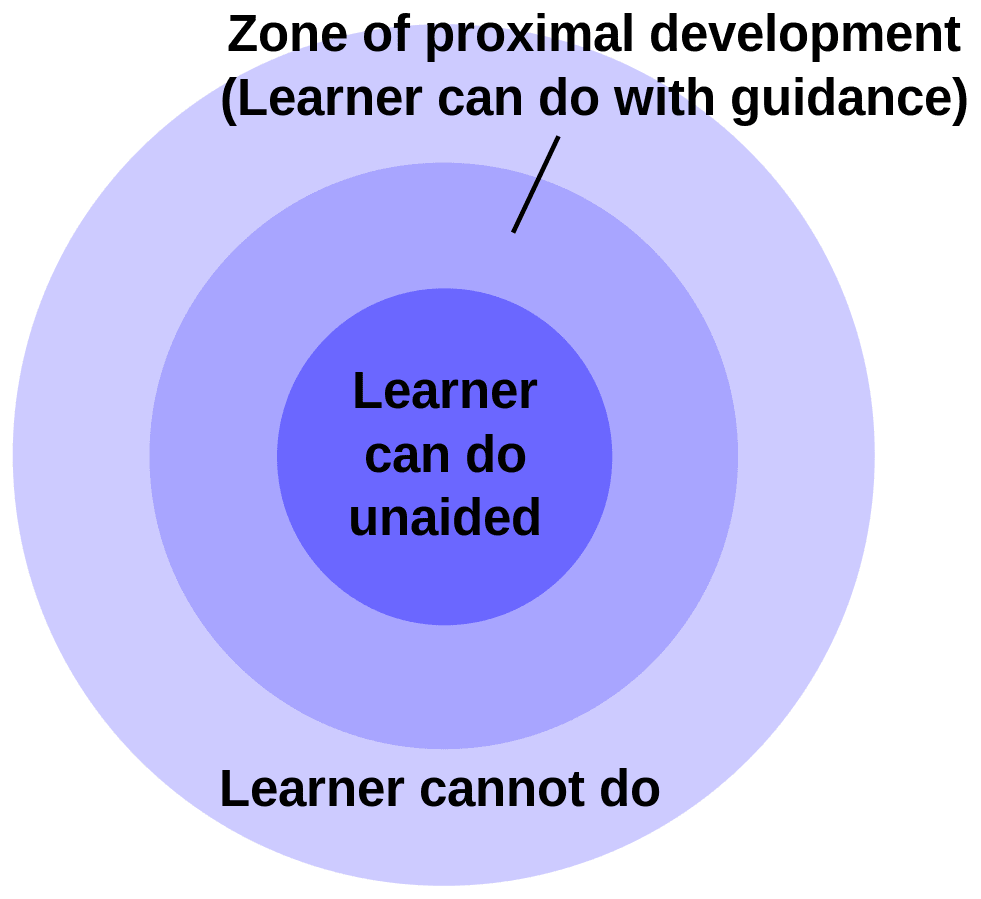
5. I give feedback and help my child understand it, and I interpret and act on feedback given to me
Do you give your child specific feedback relating to the way he or she acts? Manners such as saying ‘please’ and ‘thank you,’ for instance, don’t come naturally to children. When you see your child acting politely or impolitely, do you give him specific feedback?
6. I engage as much in dialogue as monologue
Are you ‘the rule of law’ in your home, or do you give your children choice? Naturally, not everything can be a choice. But do you listen to your children when they say what they like or don’t like?
7. I build relationships and trust so that learning can occur, where it is safe to make mistakes and learn from others
How is your relationship with your child? What could you do to improve it?
8. I identify and build on my child’s prior experiences and initial learning level
Do you make connections to other things that have happened to your child? For instance, if you have been on vacation with your child sometime in the past, and see something that reminds you of this event, do you help the child make the connection? In a way, this relates to the teaching concept of spiraling. This is the idea that in the classroom you always return and review what you have learned previously. Imagine teaching your child a concept such as octagon. You look at Stop signs, you draw them, and your child really understands what an octagon is. Do you ever bring up the topic of octagon again or do you assume that your child knows what it is without reinforcing it? Naturally, you bring it back.
I hope that some of these suggestions can help you be an even more awesome parent than you are now!
Here is to a great year at Tessa International School!
The Process of Language Learning in Children
In the earliest years, few things are as highly anticipated and nurtured as a child’s developing language skills. Language learning in children is a complicated, yet natural process involving a number of factors and influences.
Language Learning in Early Childhood
It’s no secret that reading to children and frequent conversations via immersion are critical components of a child’s learning process. Continual interactions with language – both written and verbal – are highly regarded by some as being the most important aspect of language learning.
During a child’s earliest years, they pick up skills and make associations between sounds and objects via interactions with their environments and those around them. In large part, it is simply a natural progression that takes place over time, using repetition and being immersed in specific linguistics, but there is much more to language learning than simply being around it.
Cognitive Functionality
From birth until middle childhood, children’s brains are essentially primed for language learning at impeccable rates. They grasp linguistic keys from practically every aspect of their environments from casual daily conversations going on around them to nightly bedtime stories.
“Language acquisition is a product of active, repetitive, and complex learning. The child’s brain is learning and changing more during language acquisition in the first six years of life than during any other cognitive ability (they) are working to acquire.” – Scholastic.com.
The earliest few years of a child’s life is the most crucial period for expanding their communication skills. After this point, hormonal changes will begin to hinder their ability to further pick up language learning on the same level. Because of this, it’s important to find ways to make the most of the critical communication window.
More Than Just Talking
Helping our children get the most advantageous benefits during their peak language learning years is an important part of their advancement. While most parents know that reading to your children on a regular basis is an excellent way to help them develop their communication skills, there are a number of other ways that are just as important.
Children learn by being immersed in language and witnessing others interacting as frequently as possible. Having basic conversations and engaging them with a pointed, inquisitive nature, will help them develop critical thinking skills as well as gathering the basics needed for all forms of more complex communications later in life.
Other excellent teaching methods include using any form of medium that makes learning more fun and engaging. Easy ways to expand their vocabulary can be through music, poetry, comic books, or even cooking can give a fun twist to learning new words.
The important thing to keep in mind, however, is to understand that communication is more than simply learning how to speak or use correct grammar. It is just as important to help your child develop effective listening skills as well.
“Engage children in listening exercises. We often forget that language is both receptive and expressive… It is essential that children are listening, receiving accurately and processing effectively what they hear,” explains Scholastic.com.
Overall, the best advantage you can give your child is to understand that their earliest years give the greatest opportunity for communication advancement. Utilize those years by maximizing their exposure to language learning opportunities from every angle.
Language Learning: Why Children Pick Up Linguistics Faster
If you’re considering adding a second language to your child’s curriculum, you might be wondering how it may affect their academic progress. While many parents are concerned with how the additional language may induce confusion, studies have shown the opposite to be true.
When it comes to language learning, children are actually built to absorb information with higher efficiency and understanding than adults. In fact, some studies have shown that the earlier children are introduced to multiple languages, the more they comprehend throughout the rest of their lives. So why is that?
Language Learning Process
Researchers have spent decades looking at the effects of introducing children to multiple languages at various stages. From early education to post-secondary exposure and beyond, there is a clear shift in not only how we learn, but how effectively we absorb new information.
By understanding how this process works in relation to our age, it becomes clearer why children pick up multiple languages easier than adults do. It all begins with our brain functionality throughout our various life stages.
Brain Functionality
To understand why children pick up linguistics so much easier than adults do, we must first look at how their brains process information. According to researchers, children’s brains function in a manner that’s designed to have maximum absorption. Over time, our brains adapt and begin functioning on a more streamlined level, decreasing the potential absorption of new information.
Neurology professor at UCLA, Dr. Paul Thompson, explains that at age 11, our brains begin to change. At our earliest education ages, our brains are primed for absorbing information at impressive rates by using the “deep motor” portion, or prefrontal cortex. As we age, this section of our brain levels off its growth and slowly begins to decline. As a result, it becomes more difficult for us to take on new language information at the same rate as younger children.
“Young children are hard-wired to learn language in the first few years of life,” explains HowToAdult.com. As a result, children learn by immersion and picking up language clues around them, whereas adults and older children must make an effort to study the subjects and master the language rules.
When we near puberty, our brains begin to change and along with it, our language learning process. In fact, researchers now believe there is a window of prime opportunity for picking up multiple languages: from birth until mid-childhood hormonal changes. During this time, it is believed that our brains are optimized for naturally picking up communication skills, multiple languages included.
Learning Without Trying
The difference between how children and adults pick up languages, begins with brain functionality, but certainly doesn’t end there. To better understand why children master bilingualism much easier than those older than them, you must also consider the methods of learning.
When young children begin learning a new language, it’s most often due to being immersed in the language at home. In other words, they are surrounded by others who frequently use the language around them, and they begin to pick up the new linguistics as a matter of hearing it used regularly.
On the contrary, most older children and adults who begin to study a new language do so because they are consciously choosing to. In these instances, the individual is essentially using a different portion of the brain, which is focused more on memorization than immersion.
“To make this easier to understand, think of it like listening to a song. When you listen to a song enough times, you learn the rhythms and lyrics whether you like it or not; this is unconscious learning, similar to how children learn languages,” explains PSU.edu.
How We Learn
Understanding that children learn languages differently than adults is just part of the equation. Picking up the complexities of a new language is more than being immersed in constant conversation and having the brain wired for comprehension.
Though these are certainly key aspects of why children learn languages faster, there are other factors to consider as well. For starters, children are much less concerned with mastering a language and more concerned with simply being able to use it.
What does this mean? Children pick up languages by using association – learning by seeing and doing things simultaneously. On the contrary, as we become older, language learning is more deliberate and focuses on studying grammatical rules, making it a different process altogether.
Creativity and Openness
Furthering the concept of immersion learning and brain functionality differences, children are also much more flexible in interpretation of what they see. As we age, we tend to switch to a much more fixed vision of things as a result of years of discovery and information absorption.
All of our life experiences give way to our minds basically seeing things and classifying them based on what we have already learned. This is a much more rigid viewpoint that can inhibit our ability to pick up new information. Children, on the other hand, are much more open to creative thinking and, by extension, learning new concepts.
Uninhibited Learning
Furthering the process of immersion learning, children have a tendency to be much more fearless and determined to push forward with learning. Children are rewarded for trying to speak difficult words and applauded for their strides in learning. As a result, they don’t fear looking foolish for not understanding something as older children and adults often do.
Without inhibitions holding them back, children are much freer to enhance their language learning skills. They do this by being vocal and repeating what they hear, strengthening their understanding of linguistics simultaneously.
Mastering Language
In the earliest years, children are not expected to master linguistics. They are praised for their strides in learning and language is applauded at the most rudimentary levels. We don’t expect children to speak on the same level of comprehension as older children and adults which also helps them to grasp bilingualism faster.
“Very young children don’t need to master the complexity of language that older children and adults need to communicate well. They know fewer words and use simpler sentence structures, which means they have less to learn,” explains HowToAdult.com.
Since there are so many factors that can influence how easily we pick up multiple languages, it’s difficult to pinpoint the prime conditions for learning. However, it’s evidenced that children have a distinct advantage for mastering bilingualism in their earliest years over all other age ranges.
The Bilingual Student Advantage in STEM Learning
It’s no secret that language and literacy are the cornerstones to education. The more communicatively proficient your child becomes, the greater their overall educational experience becomes. This is because knowing how to communicate effectively is the basis for all learning subjects.
It goes without saying then, that by increasing your child’s language and literacy skills – say by adding a second language – you’re increasing their cognitive ability overall. In fact, more and more studies have discovered that bilingual children show signs of significantly higher comprehension across all academic subjects than their monolingual counterparts.
The Bilingual Advantage
According to NPR.org, “People who speak two languages often outperform monolinguals on general measures of executive function.” In layman’s terms, bilingual children are adept at deciding when to use each language, giving them a higher level of focus and cognitive abilities than children who speak one language.
Executive function control allows children to decipher speech – the basis for all learning – at a much greater level of authority. Since they are forced to consider each individual speaking circumstance to determine which language to use in each situation, bilingual children gain greater insight. This insight transpires into skills such as problem-solving, decoding, focus, and the ability to read social and environmental cues – all of which are prime skills for Science Technology Engineering and Mathematics (STEM) learning.
STEM Learning
STEM learning has long been a focus of educators and professionals across the globe. Studying the areas which are responsible for things such as medical advancements, scientific discoveries, pharmaceutical breakthroughs and global structural components are clearly an important set of studies.
There is a reason these areas are so important – they are complex and critical to the advancement of civilization as a whole. With such a complex set of subjects, many parents ask if there is any way to give their child an advantage as they introduce STEM subjects to their little ones.
Bilingual Bonus
You may (or may not) be surprised to learn that bilingualism is a fantastic way to prepare your child for future STEM studies. Going back to communication and language as the core for all learning, it’s easy to understand how a child who is highly proficient in literacy and language studies would have a smoother time picking up complex STEM studies.
“Bilingual children are able to focus more intently on the topics at hand and avoid distractions from academic pursuits. They are also able to demonstrate higher levels of cognitive flexibility, or the ability to change responses based on environment and circumstances,” reports TheAdvocate.org.
This ability to change responses and remain focused easily translates to better understanding things like scientific hypotheses and mathematical equations. The cognitive flexibility gives way to a deeper academic experience across all STEM studies in general.
Overall, the bilingual child is equipped with brain functions more powerful than others. This allows them to continue grasping more complex subjects and concepts throughout their lives. Their puzzle-solving, highly focused minds will pick up STEM subjects on a level high enough to sustain years of continued study and understanding.
Improving Your Child’s Language and Literacy Skills
Few things are as critical to a child’s educational success as a firm grasp on language and literacy skills. The ability to communicate effectively crosses over into every area of study your child will embark upon in their lifetime. This fact alone makes these skills crucial to their future ability to grasp complex subjects.
The Importance of Language and Literacy Skills
Being proficient in one or more languages has unparalleled benefits that will be seen across the board in your child’s education. Since language is the basis for all teaching efforts (and also the key to communicating effectively overall), it’s understandable why it’s such an important skill to hone.
The importance of language and literacy skills go well beyond the communication aspect, however. Students who focus on deepening their language base will find themselves gaining proficiencies in their other studies as well.
According to the American Council on the Teaching of Foreign Languages (ACTFL), students who excel in language and literacy show:
- Greater test scores on standard tests
- Higher levels of focus and understanding
- Increased ability to grasp scientific hypotheses
- Higher ACT and SAT scores
- Greater problem-solving capabilities
These are just a few of the ways in which language and linguistics will lend to the greater overall educational success of your child. Since language development requires children to hone their focusing skills, they will then be able to apply the same level of focus to their other studies.
Literacy Learning Techniques
Whether your child is focusing on one language or multilingual studies, they will have set coursework within their classroom. It’s certainly no surprise that teachers have lesson plans for their students, but you may be surprised to learn how much things have changed since your days in the classroom.
Evidence has shown students respond well to teaching methods that incorporate several different learning aids. Some of these include items that can be used as visual props while others could use online programs and themed learning (animal week, gardening week, etc.).
The key to language learning in the classroom, however, is a focus on interactive conversational opportunities. It’s less about learning grammar rules and more about learning to actually communicate.
“The primary purpose of language is communication – grammar is important, but there’s a bigger picture. Language is no longer seen as being learned through mechanical exercises, it’s developed through students interacting and engaging,” explains Huw Jarvis, a professor at the University of Salford’s School of Humanities, Languages and Social Science.
According to Jarvis, motivation is the most critical component to driving a student’s interest in language learning. Since students tend to learn faster through immersion in situations which require them to find ways to communicate, allowing them to choose their own medium gives way to a greater desire to learn.
Developing a Desire to Learn at Home
In order to truly give your child the full-on immersion experience, it’s critical to continue the language and literacy learning experience outside of the classroom as well. Most parents understand that a child’s educational success is a multi-faceted experience that involves both home life and school life.
So how do we go about providing our children with enriching language learning experiences at home? Engage them and motivate them – it’s as simple (or as complex) as that.
“The best method is the method you like… Languages cannot be taught, they can only be learned,” explains Language Consultant, Luca Lampariello.
Finding out what motivates your child to learn at home involves a basic trial and error process. Unless you’ve already figured out how to motivate your child (and if so, kudos!), you may need to engage in some simple activities with them to see what they like. Find out what drives them to want to learn more.
Finding Out What Motivates Your Child
One of the simplest ways you can help your child nurture a desire to learn and excel with language and literacy is by different communicative experiences at home. Talk to them. Sing to them. Create stories with them involved. Allow your child to “read” you a story by telling you what’s going on in the sequential pictures. There are endless ways to involve them in language learning at home.
The National Center on Improving Literacy explains that by simple daily communication efforts at home, parents can help their child improve their language learning immensely. Daily communications can be as simple as a pointed discussion about their day (asking specific questions to get them to think and give detailed answers), or as thorough as labeling items at home for a language visual.
“Engage in joint reading, drawing, singing, storytelling, reciting, game playing, and rhyming. When joint reading, you and your child take turns reading parts of a book. When reading, ask her to connect the story… Give positive feedback and ask open-ended questions during joint reading to boost her interest and critical thinking skills.” – ImprovingLiteracy.org
By including daily language activities such as reading and storytelling, you’ll gain insight into what interests your child the most. Find stories that inspire them and pique their curiosity – this will help give them a stronger drive to learn more. Asking pointed questions on the topic will encourage them to focus on the task and go deeper for a greater understanding. No matter the topic, that will give way to an overall improved language and literacy experience.
A More Complete Learning Experience
If you want to apply a more direct learning approach at home, speak with your child’s teacher to discuss what methods are utilized in the classroom. Educators are usually more than willing to speak with parents about their teaching methods and how they can be enhanced at home.
You can also take a closer look in their bookbags to gain some insight into what they’re focusing on in the classroom. If you see they have a themed week at school, try continuing the theme at home. As examples, if they have a color theme for a week, use corresponding color foods in dinner plans, colored bath water, or planned outfits for school to bring up topics later.
They key to continuing language and literacy learning at home is to simply communicate. Communicate with your children about their days or share a good story with them. Communicate with their teachers to learn any tips or subject ideas to coordinate home learning themes and techniques with classroom learning. Above all, the most important thing you can do to help your child develop their language skills is to continue to engage them in communication. Talk with your kids and talk often – it’s that simple!


